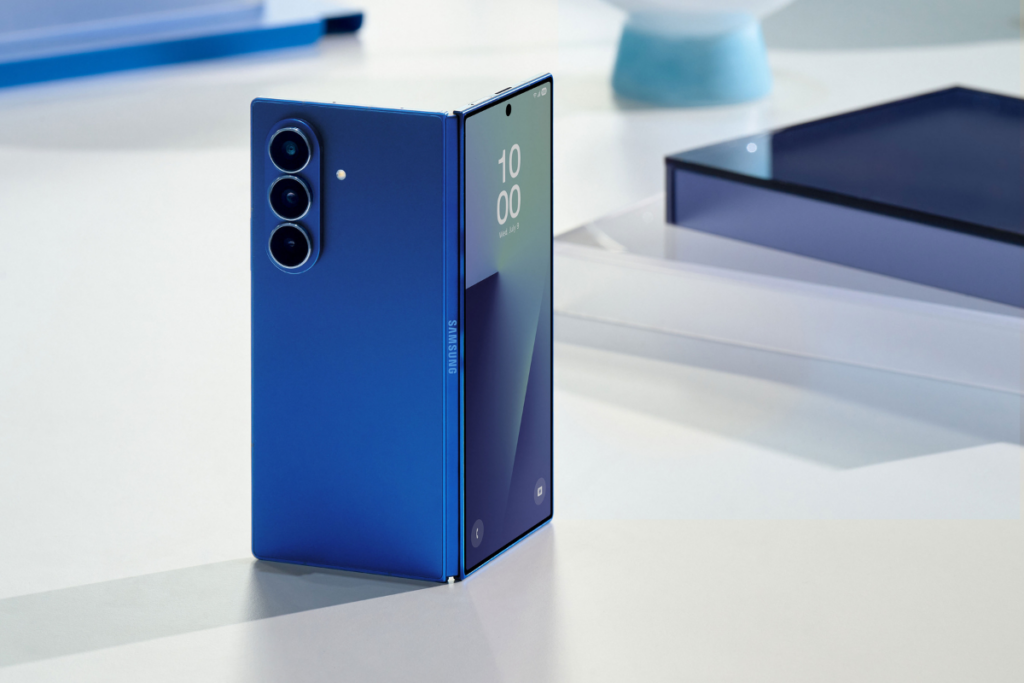
Samsung’s latest foldable, the Galaxy Z Fold 7, is finally here and it’s easily the sleekest, lightest, and most powerful Z Fold yet. But it also comes with a not-so-small problem: a $1,999 starting price.
That’s higher than any Samsung foldable before it, pushing this futuristic smartphone tablet hybrid further into ultra-premium territory. So the real question isn’t just what the Fold 7 offers, it’s who it’s actually for.

If You’re Coming from a Fold 5 or Earlier, the Upgrade Feels Big
Let’s start with the obvious group: owners of older Fold models like the Z Fold 5, Z Fold 4, and Fold 3. For these users, the Fold 7 represents a major leap forward. The cover display is now wider and taller at 6.5 inches with a more comfortable 21:9 aspect ratio, and the internal screen stretches to a massive 8 inches, 11% larger than before. Samsung has also replaced the awkward under-display camera with a regular 10MP sensor, finally fixing what felt like a downgrade in earlier models.
The new Snapdragon 8 Elite for Galaxy chip brings stronger AI performance and graphics, but more importantly, there’s a 200MP main camera on the back, a first for the Fold line. You’ll still find a 12MP ultra-wide and 10MP 3x telephoto, but the jump to that ultra-high-res sensor finally gives the Fold a camera setup that competes with the S series.
Add to that the lighter 215g chassis (even lighter than the Galaxy S25 Ultra), a much thinner build at just 4.2mm unfolded, and a reengineered Armor FlexHinge with better durability and less visible creasing. For users with older Folds, these are real, tangible changes that make daily use feel more modern and comfortable.
Z Fold 6 Owners Should Probably Sit This One Out
If you just bought the Galaxy Z Fold 6, don’t panic. You’re not missing out on much. While the Fold 7 introduces a larger screen, new hinge design, and camera upgrades, the processor, battery size, and charging speeds remain virtually unchanged. Even software-wise, both devices will run Android 16 with One UI 8, and most of the new Galaxy AI features like Portrait Studio, Audio Eraser, and Side-by-Side editing are likely coming to the Fold 6 via updates.
Unless you’re desperate for that 200MP sensor or lighter frame, there’s little here to justify spending another two grand within a year. You’re already holding a foldable powerhouse.
Pixel 9 Pro Fold, OnePlus Open or Foldable Flagship Users
If you’re coming from a Google Pixel 9 Pro Fold, OnePlus Open (no more upgrades this year though), or similar flagship foldable, the Fold 7 doesn’t dramatically change the game. Those devices already offer wide cover displays, thin bodies, and competitive camera systems. While Samsung now matches or exceeds them in many areas, it’s not a night-and-day difference.
Yes, Samsung’s software experience is more mature and the AI tools are better integrated. But the upgrade would be more of a sideways move than a leap forward. Unless you’re itching for a 200MP sensor or want Samsung’s ecosystem benefits, there’s little urgency to switch.
New to Foldables? This is the Best Version Yet
For foldable newcomers with deep pockets, the Z Fold 7 is now a more approachable and practical entry point than ever before. The refinements to size, weight, hinge reliability, and AI-powered productivity make it feel less like an experiment and more like a mature tool. Samsung’s growing support for long-term updates (seven years!) also means you’re not just future-proofed but AI-proofed too.
And if you’re upgrading from a traditional slab phone and want more screen without giving up portability, the Fold 7 finally gets enough of the basics right to be worth serious consideration, especially with Samsung’s generous trade-in offers.
For more daily updates, please visit our News Section.
Stay ahead in tech! Join our Telegram community and sign up for our daily newsletter of top stories! 
The post Who Should Actually Buy Samsung Galaxy Z Fold 7? appeared first on Gizmochina.






